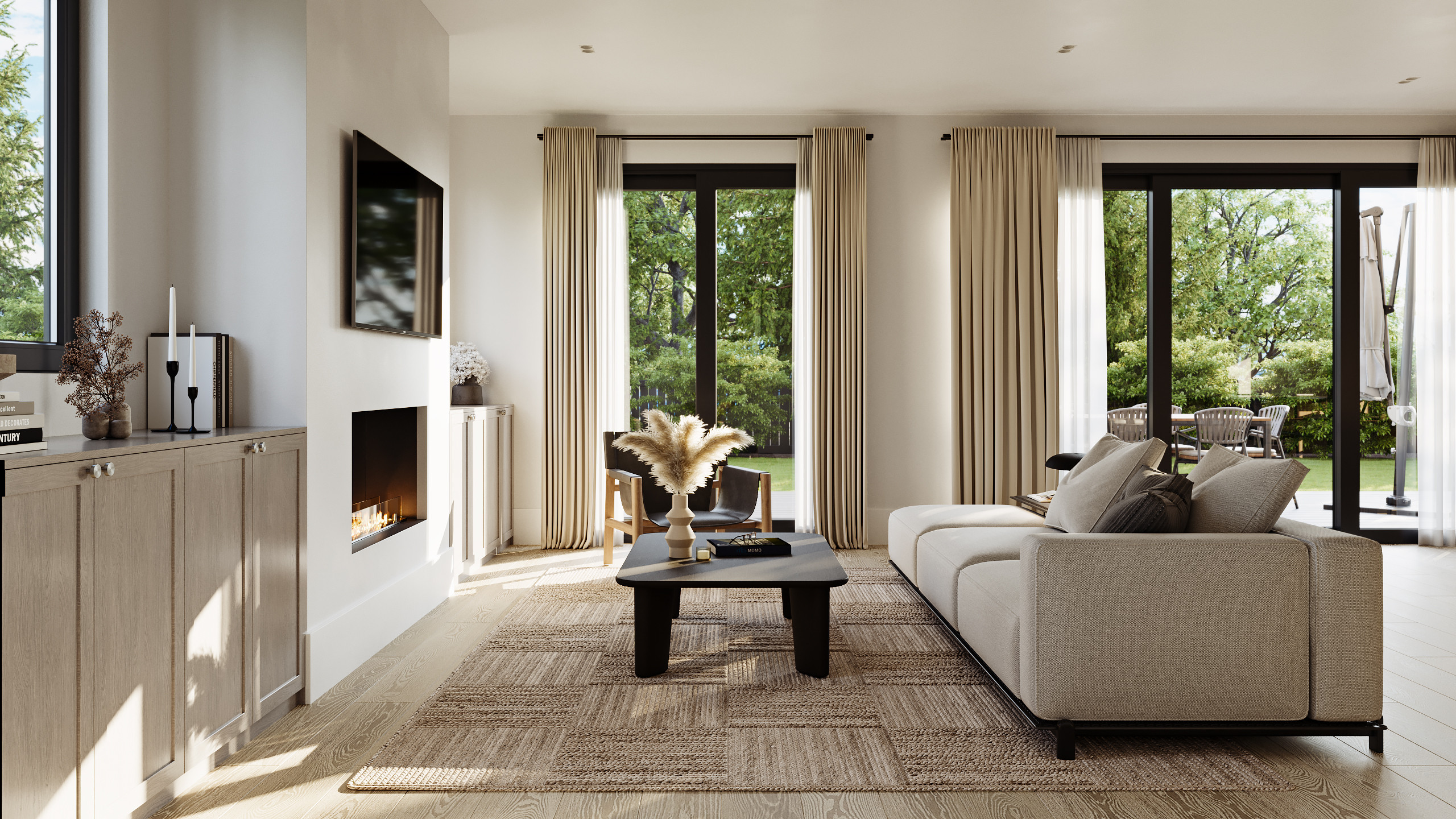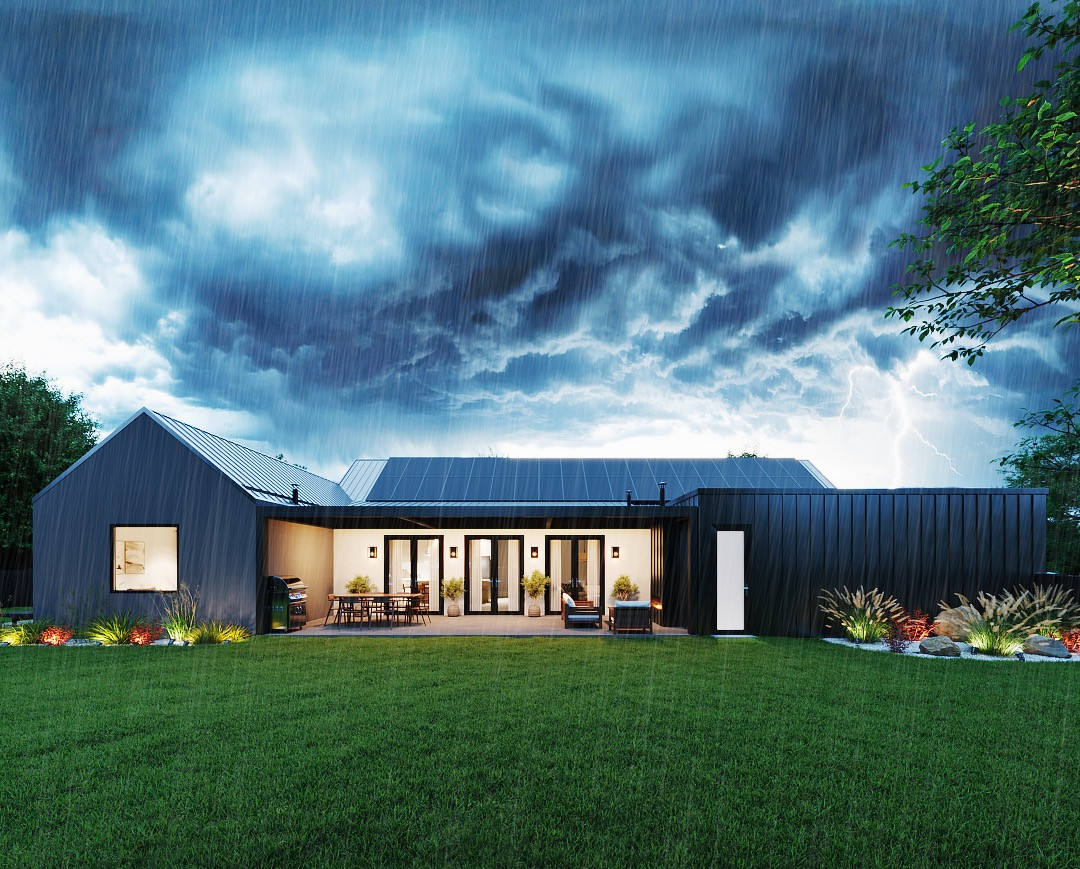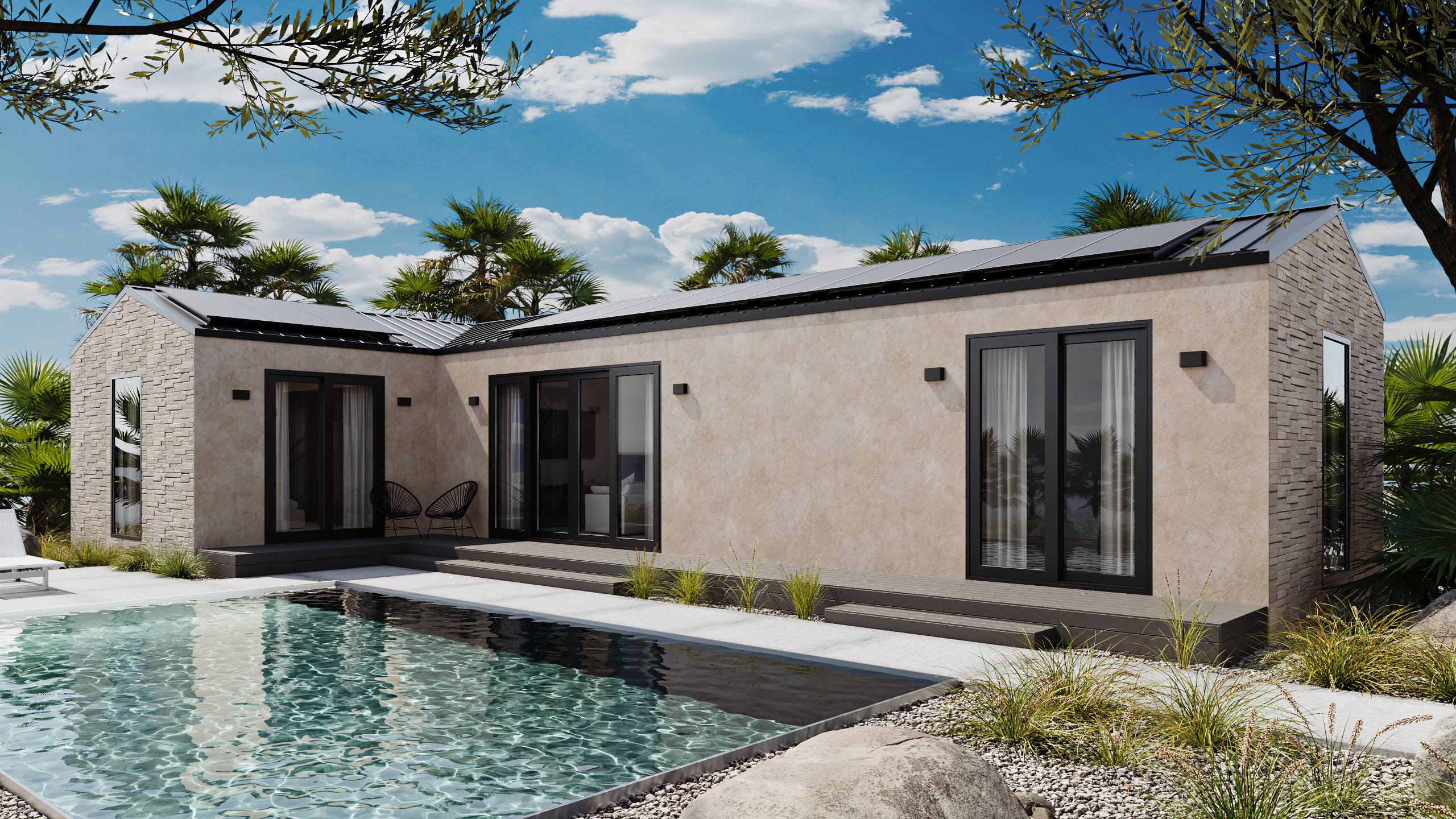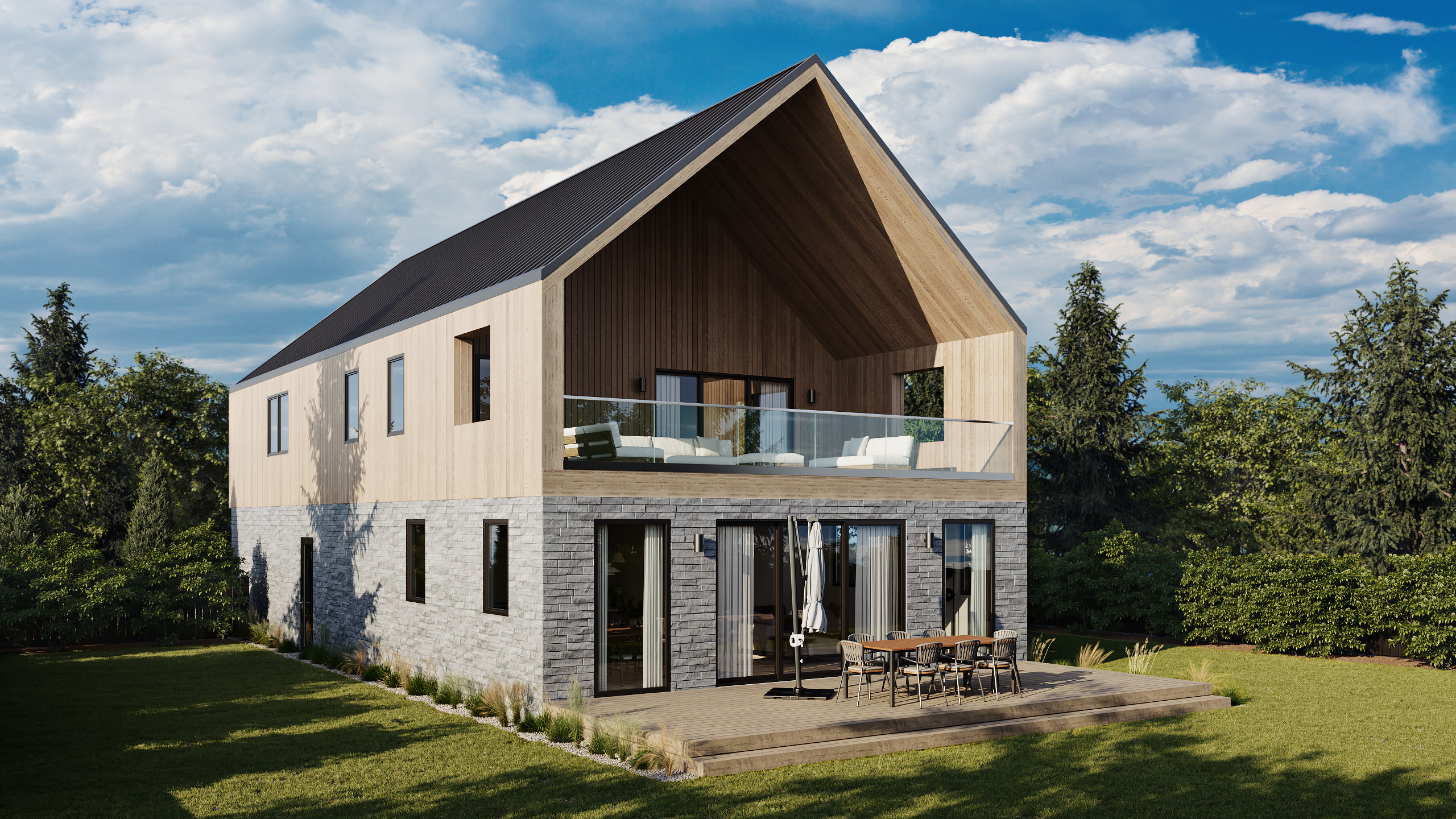TIMMMM-BRRRRR! Down goes a home-framing style
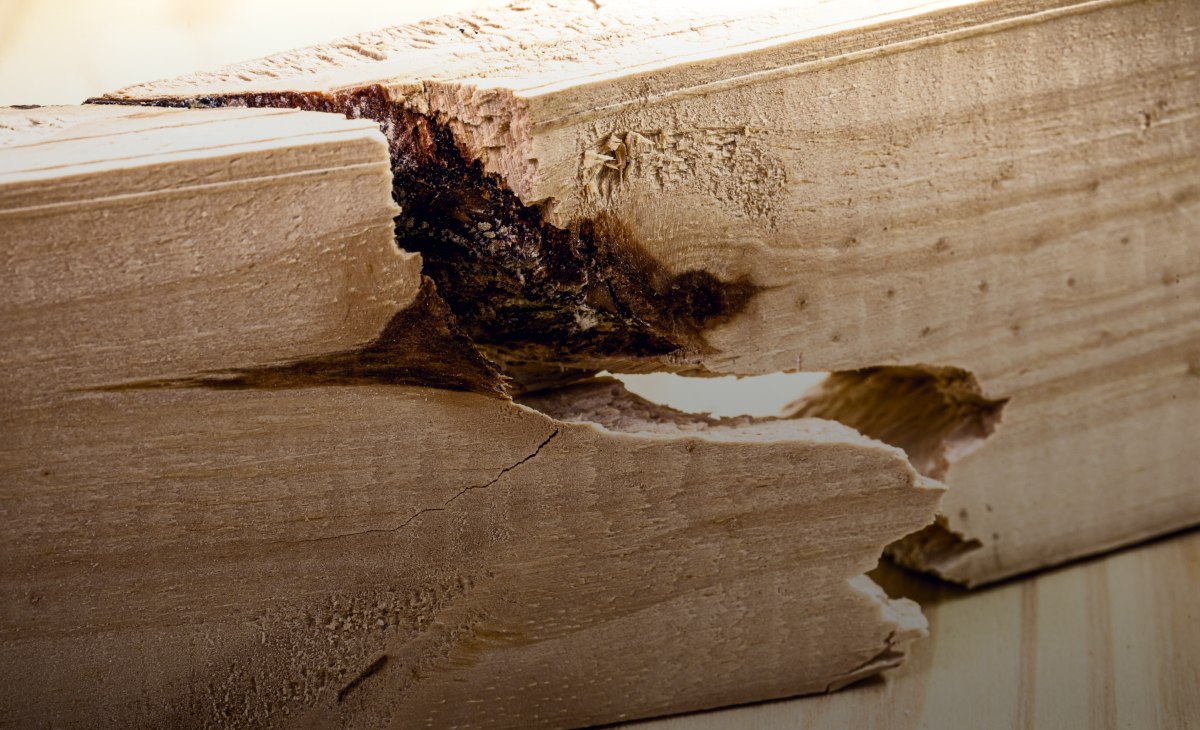
Timber is the popular kid. It’s still the most widely-used framing method in U.S. residential housing.
But its days as a building material are coming to an end. Here are six reasons why and what will likely replace it.
Reason No. 1: Wood + fire = ash
Wood burns.
And in this so-far super-hot summer of 2023, the risks of wildfires are rising. As are the dangers they pose to stick-built homes.
In response, one California contracting company started building with non-wood materials in 2020. As the company’s president works with clients who lost homes in the 2020 fires, 19 out of 21 rebuilds are using non-wood materials.
“His workers have traded in hammers and nails,” says Time Magazine, “for pneumatic tools that fasten together steel panels.”
We think he may be onto something.
Reason No. 2: Mass timber isn’t the answer
The development of mass timber seems to show great promise around sustainability. Mass timber is an engineered wood that involves large structural posts, panels, and beams glued under pressure or nailed together in layers. The wood’s grain is then stacked perpendicular for added strength.
But as the Yale School of the Environment puts it, “There are big questions about just how sustainable the new building material is.” Notably, about the management of mass timber forests, and the amount of CO2 emitted during the logging, manufacture, and transport of mass timber products used in construction.
And other environmental experts point out there’s a lot to be said for doing nothing.. Climate change is worsening dry conditions. Plus, trees absorb CO2 and reduce human emissions, and keeping trees in the ground is one of the most cost-effective ways to slow the changes.
Reason No. 3: Where you see a frame, a termite sees dinner
Timber is a staple in the diet of termites. More specifically, they love the cellulose compound within wood. Every year the critters cause more than five billion in property damage. And property owners spend over two billion dollars to get it all fixed.
What’s worse, the structural damage caused by termites is often hidden in the walls and floors, where it’s not visible. And most annoyingly of all, insurance companies won’t cover it.
Reason No. 4: Something is rotten with the state of the den
When I was a kid, my family moved into a house in the Twin Cities only to discover a “situation,” as a contractor carefully put it.
Because the previous owners had failed to provide adequate ventilation beneath the timber-framed den addition, the foundation was rotting from beneath us.
The rest of that summer, plastic sheeting covered a good chunk of the house and many, many loads of dirt were carted upstairs and dumped in our backyard flower beds.
Reason No. 5: Stompers need soundproofing
Anyone who’s lived below a person fond of high heels or midnight vacuuming (or both) can attest—the noise transmission of certain building materials can be a problem.
Timber frames transmit sound more easily than other materials, leading to noise issues between rooms or floors in a multi-story house. Soundproofing solutions to the stompers exist, but their costs add up.
Reason No. 6: Wavy walls are a thing
Timber isn’t the easiest material to work with. It moves. Moisture makes it swell and shrink. Small errors in the construction can lead to big problems as timber dries and ages.
Windows can be hard to set into wood frames, and contractors dread drywall callbacks. Timber framing requires regular maintenance – including treatments to protect against rot and weathering – to ward off wavy walls.
No need to despair
Here’s the thing. People are pretty clever when the chips are down. With so much at stake in housing and sustainability, builders are innovating with some left-field stuff, like wood-based concrete, ABS thermoplastic and pressed hemp straw.
Our personal favorite, cold-formed steel, has a longer track record of success in construction. It resists fire, moisture, and pests, and is 100% recyclable. It’s part of our vision for helping builders build homes today that thrive in the world of tomorrow.
Cheers,
Mike
Mike McAllister is head of story for Momo Homes.
Track the global transition to sustainable homebuilding.
Subscribe to the Momo Focus newsletter.

